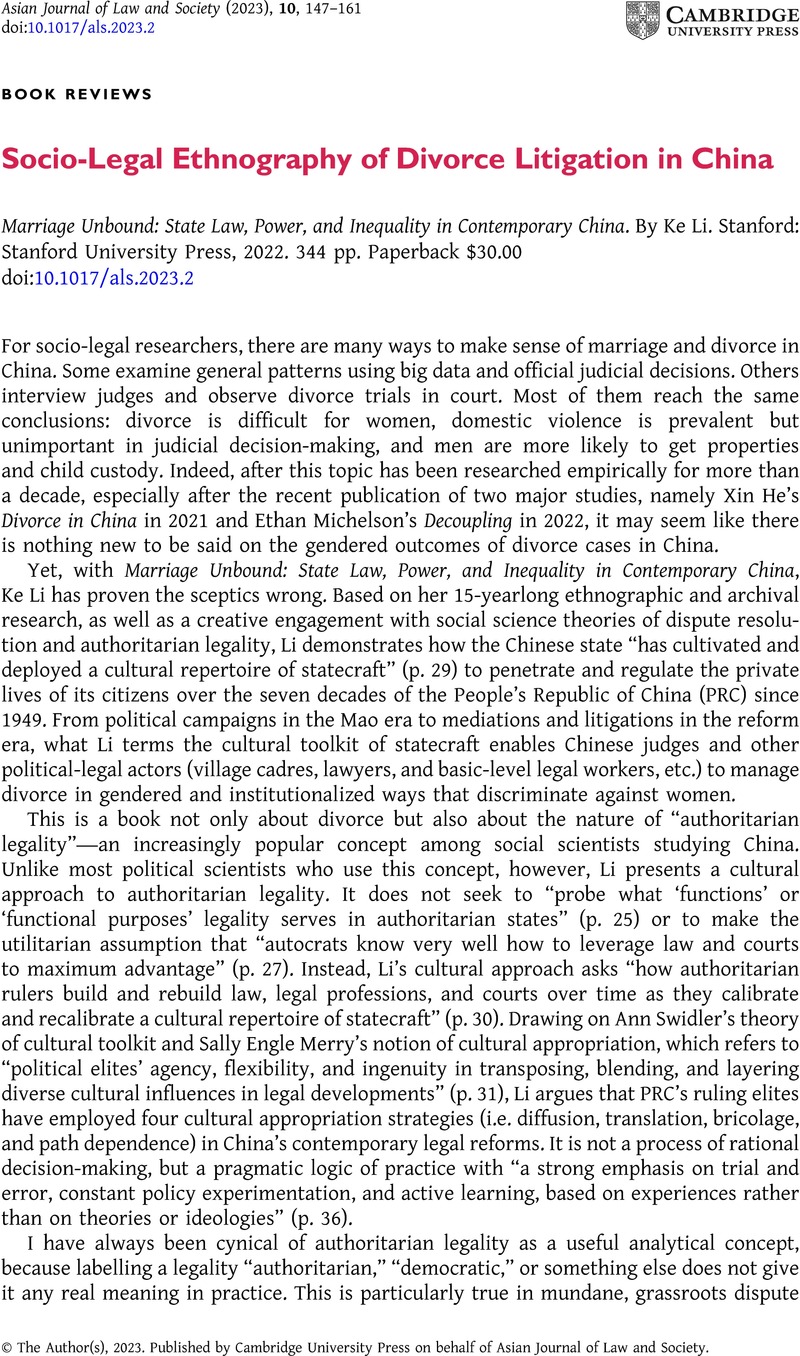No CrossRef data available.
Article contents
Socio-Legal Ethnography of Divorce Litigation in China - Marriage Unbound: State Law, Power, and Inequality in Contemporary China. By Ke Li. Stanford: Stanford University Press, 2022. 344 pp. Paperback $30.00
Review products
Marriage Unbound: State Law, Power, and Inequality in Contemporary China. By Ke Li. Stanford: Stanford University Press, 2022. 344 pp. Paperback $30.00
Published online by Cambridge University Press: 02 March 2023
Abstract
An abstract is not available for this content so a preview has been provided. Please use the Get access link above for information on how to access this content.

- Type
- Book Review
- Information
- Copyright
- © The Author(s), 2023. Published by Cambridge University Press on behalf of Asian Journal of Law and Society


